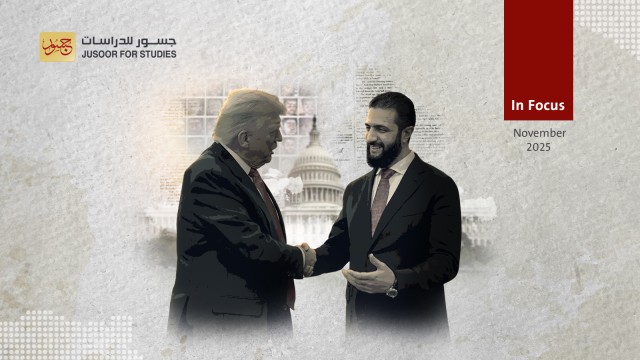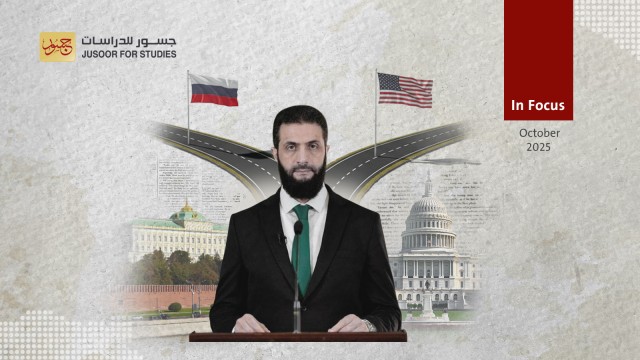Political Solution between Geneva and Astana
Mr. Mohammad Sarmini
Jusoor for Studies General Manager
Preface
Changing Syria into foreign influence was not related to Russia or US-Coalition forces intervention or even the Turkish one, as it started since the first year of Syrian Revolution, turning Syria into international trusteeship in 2012.
Foreign intervention began (mainly and secretly) after regime asking of support from Iranian end, opposition sought political support at first, however, it turned into military one later on, turning Syria into war zone as Syrians shed a lot of blood rather than making an effective decision! in 2012.
Geneva initial statement on 30/6/2012, represented the most notable depict of the crisis as Americans and Russians decided to form the appropriate solution without any Syrian participation or consultation, making this decision a road map for Geneva!
Geneva track: the hopeful solution!
This track has witnessed several changes within its last meetings, expanding the representatives (of different parties) to meet the government delegation, getting large in number as individuals with no representing of any special category also, unable of imposing realities on any spot in Syria.
However, outcomes of this track, concerning what is researched and comparing to what presented in Astana, seems to have some optimism (in general), as Geneva agreement discusses many issues like: forming constitutions, transitional justice, perpetrators held accountable and elections, while Astana participants dedicated their time for ceasefire dialogue only.
Optimism of Geneva, grants some moral dimension toward international efforts for finding solution in Syria, at which acting countries unable to decline the supporting efforts against war crimes and humanity crimes, seeking a solution for the refugees and displaced crisis (the greatest since WW2)!
Astana track: realities on field contribute to the possible solution
The track is based on realistic prospect, searching for solution (to stop the conflict among all parties) that could end the war according to current field facts, creating opportunity to study the form and details of political solution.
Astana track launched (on the same basis of Geneva) on reliance of foreign influence, dealing with this influence more clearly and directly, making external actors part of negotiation process rather than sitting in the meeting foyer to direct the local actors, moreover, this influence was invested positively, turning war actors into peacemakers.
Geneva track did not care for diversity of participants along with their Ideological, ethnic and gender representation, but focusing only on their effectiveness and influence in the field.
What are the international positions toward the two tracks?
Despite the limited success of Geneva track, it continued in almost regular pace (but still in the medium range).
No one of the actors seems welling to stop this track, in addition to not being ready to convert its outcomes into political realities!
On the other hand, Astana track represents realistic and direct influence, as ceasefire process is applied according to this track outcomes, locals have directly felt the concrete outcome of this track.
This track with its Russian impression, doesn’t go far (in its aims) from the American position, getting closer to the American road map than Geneva, as it aims to ceasefire, de-escalation zones, dividing the influence among disputants, delaying the whole political solution.
Main regional parties may have conflict of interests as Turkey tends to Astana with more room to move than Astana contrary to Arabian Gulf and Egypt.
Between Geneva and Astana: which track is destined to see life?
Geneva track seems inapplicable, as aspects of agreement between Russia and America is out of question.
On the other hand, Astana provides stability and cessation of violence (an international demand), gaining public approval even from parties standing against Astana agreement, as ceasefire will open a window toward normal life in targeted zones, allowing locals to regain quasi-normalcy of living after seven years of constant blood shedding.
Although turning back to normal life doesn’t grant political solution, the stability and tranquility will allow the emergence of new political class and new interests network, strengthening the civil institutions on the account of armed men, creating new political components to become the start of next phase.
The appearance of these components will pave the way toward new form of local and international negotiation leading to thorough solution (which may take one or two years after stability situation).
* The paper presented by Mr. Mohammad Sarmini Jusoor for Studies General Manager in a seminar about "Prospects of political solution in Syria" with cooperation of Carnegie Center in Beirut.








